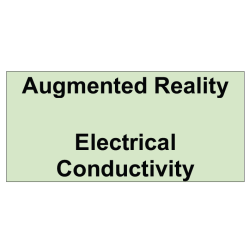- Electrical conductivity Experiments
- Do experiments using your smartphone or tablet
- Do physical experiments with your students
- Complete explanations
- Worksheets for students
Download the catalogue here.
- Download the free App here

The ability of a material to conduct electricity is changed by various factors. In these experiments, we explore how to change electrical conductivity by varying the size and material of the conductor.
The ability of a material to conduct electricity depends on the size and material of the conductor. The ability for a material to resist electricity occurs when electrons collide with the atoms in the material. The more collisions that happen, the higher the electrical resistance and the lower the conductivity. Graphite is an allotrope of the element carbon (C) and has a special layer structure with delocalised electrons. Graphite in a pencil has a medium level of electrical conductivity. It allows a 9V battery to provide enough power to light up the 3V LED (Light Emitting Diode) but not break it at the same time.
The first experiment changes the conductivity of the graphite by changing the thickness of the line. A thicker graphite line reduces the chance for the electrons to collide with the carbon atoms because it has a larger cross section. More electrons are able to travel each second through the graphite and so the light is brighter.
The second experiment changes the conductivity of the graphite by changing the length. Since electrons are more likely to collide with carbon atoms on a longer trip, a long graphite line will increase the resistance and reduce the electrical conductivity. Hence, the light is brighter in the shorter line.
The third experiment explains how a different material such as water conducts electricity. Compared to distilled water, salt water has a large number of charged particles called ions and they will move freely when a voltage is applied to the salt water. This allows salt water to conduct electricity. The distilled water, however, does not have any movable ions and, therefore, does not conduct electricity. By adding salt to distilled water, we increase the number of charged ions so the water increases its electric conductivity and becomes a conductor.
Augmented Reality - Electrical Conductivity
- Brand: Kilbaha Education
- Product Code: Augmented Reality - Electrical Conductivity
- Availability: In Stock
-
$10.00
*Note: When you Buy Now with PayPal, your file will be delivered to you within 24 hours. If you want to download your file immediately, you must Register, Login, Add to Cart and Checkout. Full details here.


